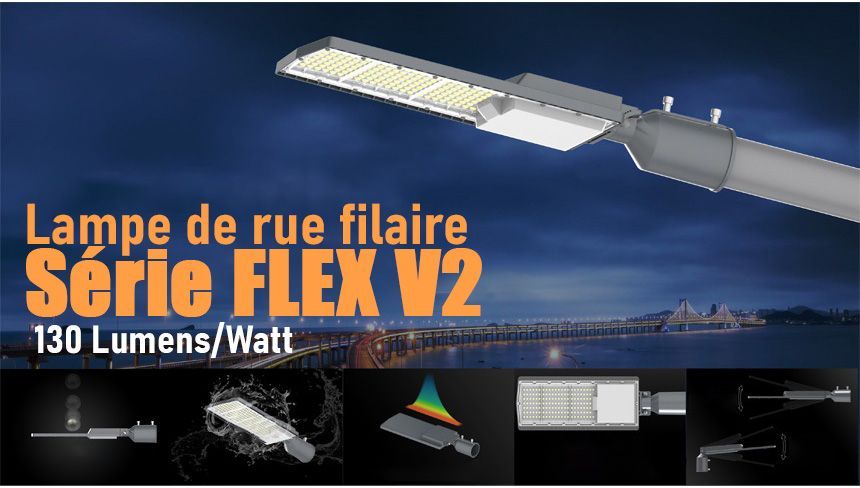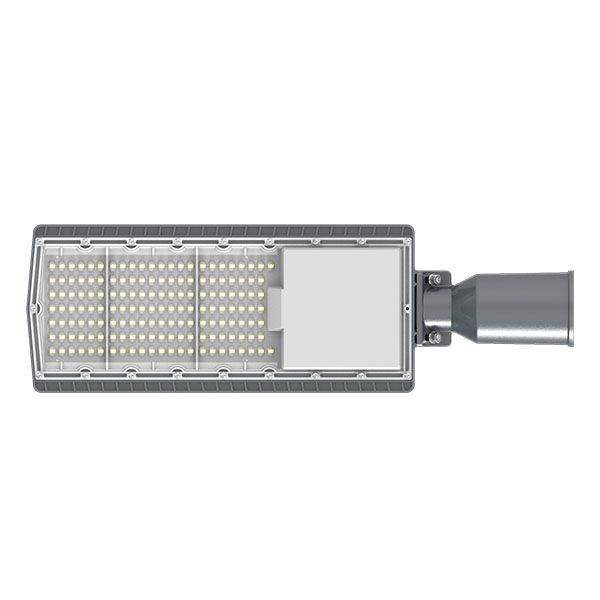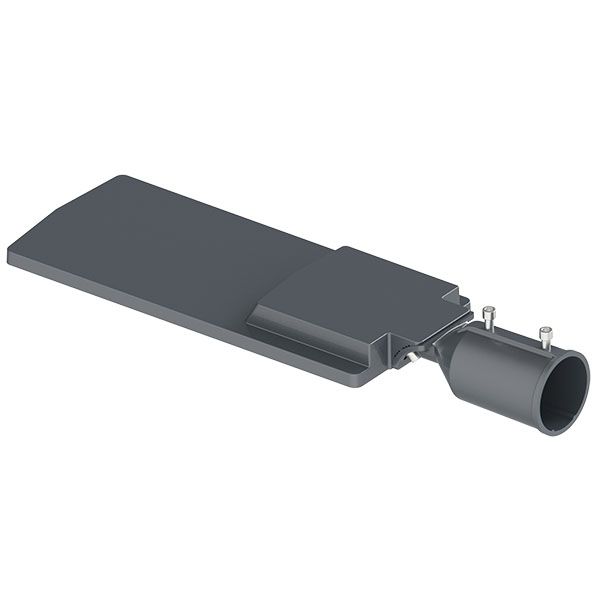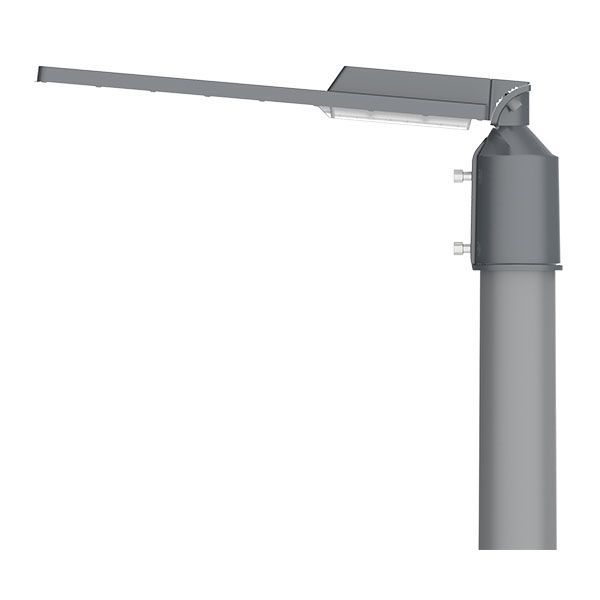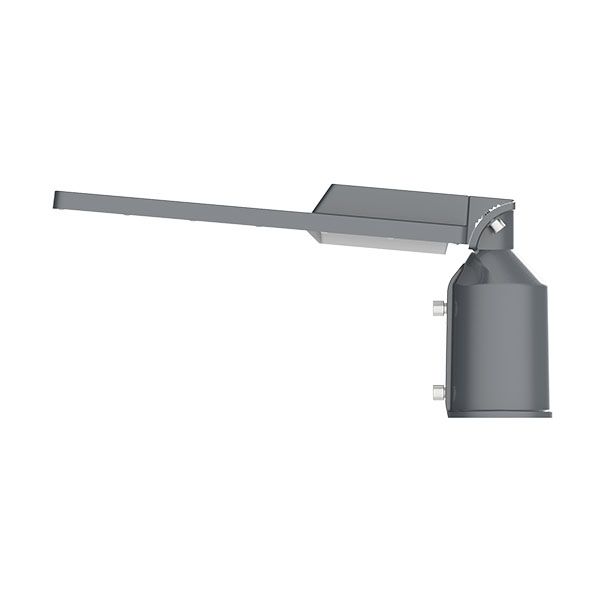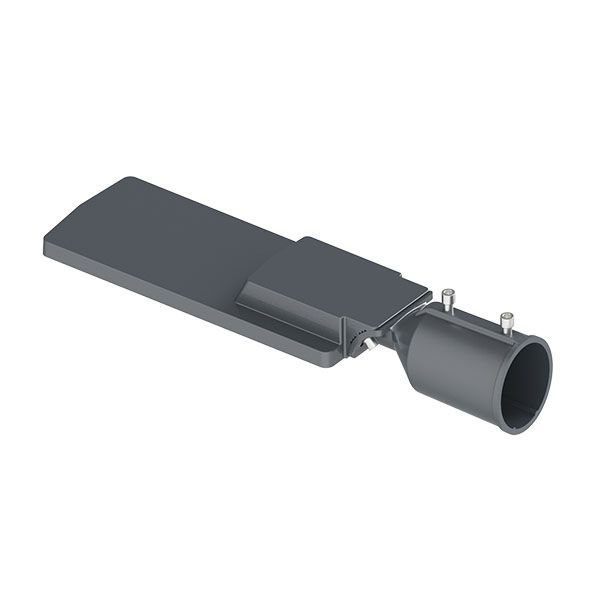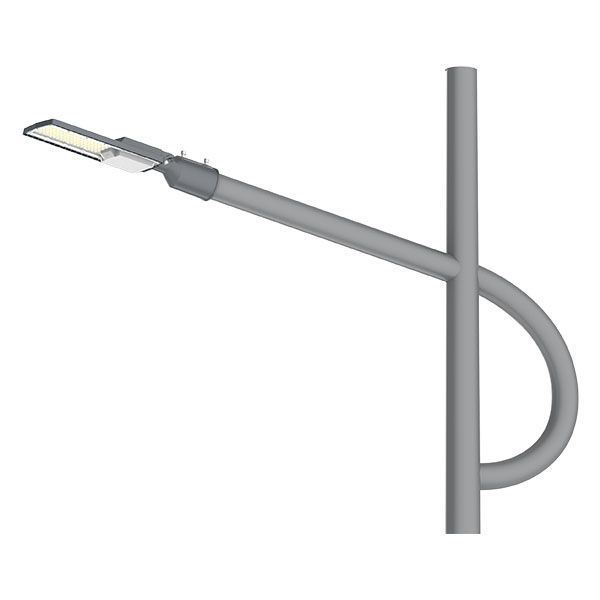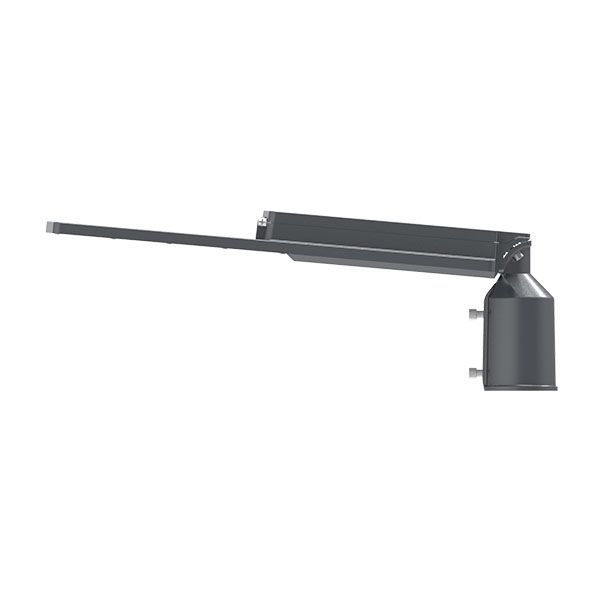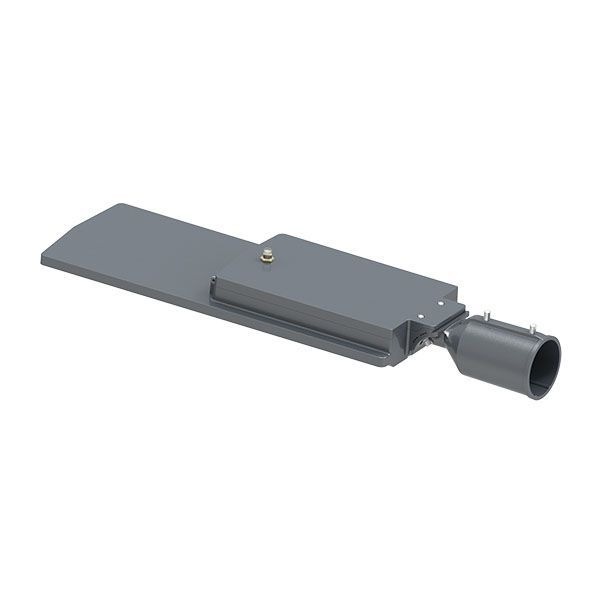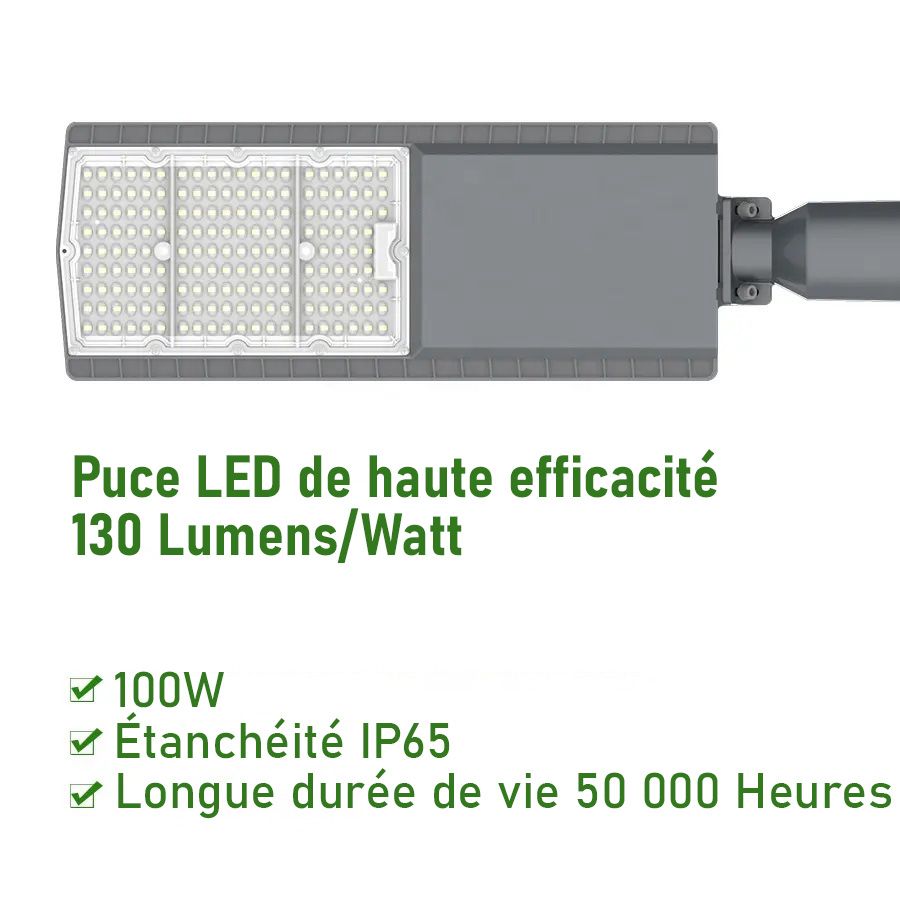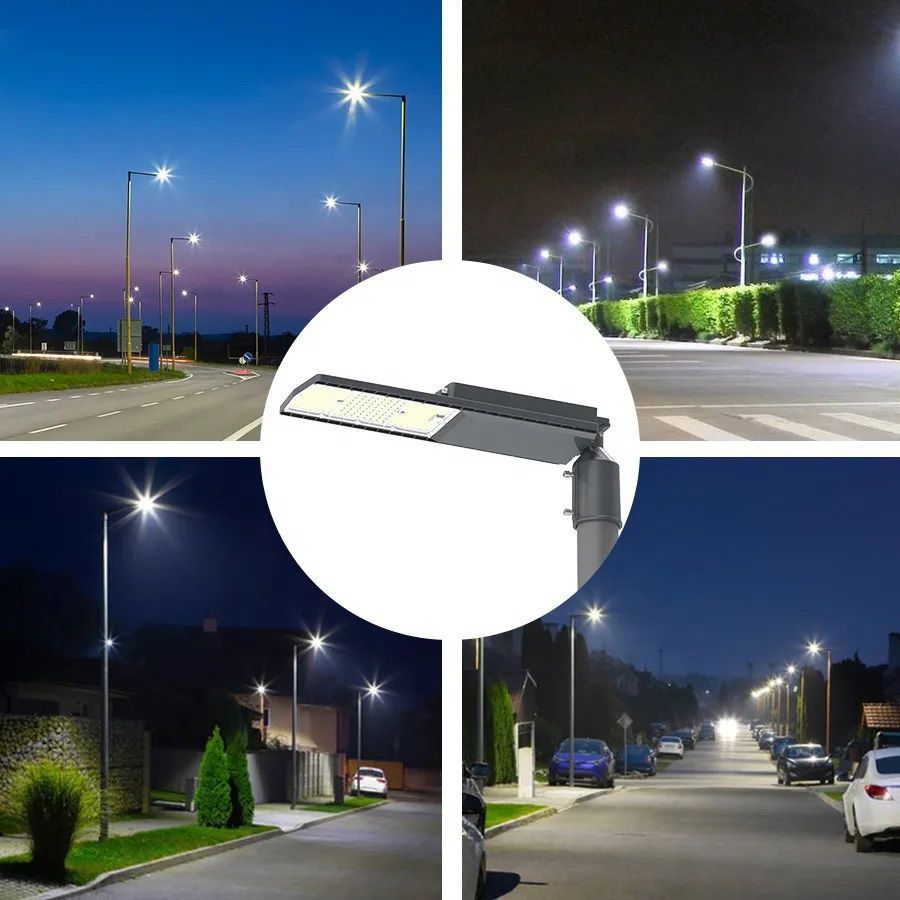Wired street lampFLEX V2 Series3000k / 6000k
IK09, what are the advantages in lighting?
IK09 is an international protection standard used to classify the degree of protection offered by electrical enclosures against external mechanical shocks. This standard is particularly important in environments where electrical equipment is likely to be subjected to impacts or vibrations.
The IK09 standard provides a high level of protection against mechanical shock, which ensures effective protection of electrical equipment against damage caused by falls, impacts or vibrations. This standard is often used in outdoor installations, industrial buildings, transport facilities, security systems and communication equipment.
In summary, the main advantage of the IK09 standard is that it guarantees effective protection of electrical equipment against damage caused by mechanical shocks, which helps to ensure the safety and reliability of electrical equipment in harsh environments.
----------------------------------------------------------------
What is the advantage of 6KV overload protection?
6KV overload protection offers several safety and durability benefits in lighting applications. Here are some of the benefits:
Protects against power surges: Voltage fluctuations can damage lighting circuits. 6KV overload protection can protect against overvoltage and extend the life of the lighting.
Reduces fire risks: Power surges can also cause sparks that can start fires. 6KV overload protection can help prevent these fire hazards and maintain a safe working environment.
Improves lighting stability:
Power surges can disrupt the stability of lighting, which can cause brightness fluctuations and interruptions in power supply. 6KV overload protection can maintain lighting stability and ensure smooth power supply.
Maintenance cost savings: Power surges can damage lighting circuits, which can lead to high maintenance costs. 6KV overload protection can help reduce maintenance costs by extending lighting life and avoiding costly repairs.
In short, 6KV overload protection is an important element to consider to ensure the safety and durability of lighting systems.
----------------------------------------------------------------
Advantage of 130 Lumens/Watt?
The advantage of 130 lumens per watt is that it is a high ratio between the amount of light produced (measured in lumens) and the amount of energy consumed (measured in watts). This means that light sources that have an output of 130 lumens per watt are very efficient in terms of using electrical energy to produce light.
In comparison, less efficient light sources require a greater amount of energy to produce the same amount of light. This results in a higher electricity bill for the user, as well as a larger environmental footprint due to increased energy consumption.
High-efficiency light sources, such as those with an output of 130 lumens per watt, are therefore advantageous for their energy efficiency, as they reduce energy consumption while providing enough light to meet lighting needs. This can result in energy savings, cost savings and reduced environmental impact.
----------------------------------------------------------------
Strong point of the Epistar LED brand in lighting?
Epistar is a well-known brand in the LED lighting industry for its manufacturing quality, reliability and ability to produce high-performance LEDs. Here are some of its strengths in lighting:
Luminous efficiency:
Epistar LEDs are known for their high luminous efficacy, which allows for high light output while consuming less energy. This feature is particularly important in applications where energy efficiency is a key issue, such as street lighting, commercial buildings and industrial facilities.
Manufacturing quality:
Epistar LEDs are manufactured to high quality standards to ensure long life and increased reliability. The manufacturing processes used by Epistar allow for the production of high quality LEDs with a very low defect rate, ensuring consistent and uniform quality.
Product range:
Epistar offers a complete range of LED lighting products, suitable for different needs and applications. This includes LEDs for indoor and outdoor lighting, medium and high power LEDs, as well as LED modules for easy integration into luminaires.
Technological innovation:
Epistar is known for its commitment to technological innovation, which translates into constant product improvement. The company regularly invests in research and development to improve the performance and reliability of its LEDs, while reducing their cost.
In summary, Epistar LED brand strengths in lighting include its high luminous efficacy, quality manufacturing, comprehensive product line, and commitment to technological innovation. These features make Epistar a popular and respected brand in the LED lighting industry.
----------------------------------------------------------------
What is Class I protection class in lighting?
The Class I protection class in lighting refers to the electrical safety of a luminaire or electrical equipment. This classification is based on European safety standards and indicates that the luminaire is equipped with an earth wire that connects it to an earth source. This earth connection is important because it helps dissipate leakage currents and ensures the safety of users.
More specifically, a Class I luminaire must have an earth connection and a protective cable against electric shock. Earthing is an important safety measure that prevents any risk of electric shock in the event of accidental contact with a live part. This protection class is particularly important for electrical equipment that is used in environments where the risk of electric shock is higher, such as industrial installations or outdoor equipment.
In summary, the Class I protection class in lighting is an electrical safety standard that indicates that the luminaire is equipped with an earth connection and a protective cable against electric shock, which significantly reduces the risk of electric shock for users.
----------------------------------------------------------------
CE & ROHS, CEM, LVD, CB, ENEC certifications?
CE & RoHS, CEM, LVD, CB, ENEC certifications are regulatory compliance standards that are used to ensure the safety and quality of electrical and electronic products. Here are the benefits associated with each of these certifications:
CE & RoHS Certification: CE & RoHS certification indicates that the product complies with European Union (EU) health and safety standards and does not contain substances harmful to the environment. This certification is important for manufacturers who want to market their products on the European market, as it ensures regulatory compliance and helps ensure consumer safety.
EMC Certification: EMC (Electromagnetic Compatibility) certification indicates that the product is capable of operating correctly in a disturbed electromagnetic environment. This certification is important for electronic equipment that must be used in environments where electromagnetic interference can disrupt its operation.
LVD Certification: The LVD (Low Voltage Directive) certification indicates that the product complies with electrical safety standards for low voltages. This certification is important for products that operate at voltages lower than 50V AC and 75V DC.
CB Certification: CB (Certification Body) certification is an international compliance standard that ensures that the product has been tested and evaluated in accordance with international electrical safety standards. This certification is important for manufacturers who want to market their products globally, as it facilitates the recognition of regulatory compliance in different countries.
ENEC Certification: ENEC (European Norms Electrical Certification) certification indicates that the product has been tested and assessed in accordance with European electrical safety standards. This certification is important for manufacturers who wish to market their products on the European market, as it ensures regulatory compliance and helps ensure consumer safety.
In summary, CE & RoHS, CEM, LVD, CB, ENEC certifications provide many benefits, such as regulatory compliance, consumer safety, international recognition of regulatory compliance, and the ability to market products in different markets. These certifications increase consumer confidence in electrical and electronic products, and help manufacturers ensure the quality and safety of their products.
----------------------------------------------------------------
The 140x70° angle in lighting, what advantage?
The 140x70° angle in lighting refers to the distribution of light produced by a luminaire. This specification indicates that the light is diffused at an angle of 140 degrees in the horizontal direction and 70 degrees in the vertical direction.
The advantages of the 140x70° angle in lighting are as follows:
Lighting uniformity: This light distribution allows for an even distribution of lighting in a given space. The light is distributed evenly over a wider area, which helps avoid dark areas or overlit areas.
Shadow Reduction:
The angle at which the light is spread also helps reduce shadows. By illuminating areas that would otherwise be shaded, the light can improve visibility and make the space safer.
Adaptability:
The light diffusion angle is suitable for a variety of applications including street lighting, parking lots, commercial and industrial buildings, airports, stadiums, etc.
Energy saving:
By spreading light over a wider area, fewer luminaires are needed to illuminate a given area, which can reduce energy consumption and associated costs.
In summary, the 140x70° lighting angle provides uniform light distribution, reduces shadows, is adaptable to a variety of applications and can help save energy.
150 Watts

